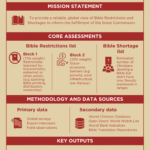NEW YORK (RNS) — On a Thursday afternoon early this summer, seven people sat in a circle in the basement of St. George’s Episcopal Church in midtown Manhattan, facing a whiteboard covered with announcements about an upcoming Deaf arts festival and the date for local elections. Opah Gordon, a tall, 57-year-old deaf woman, stood at the board signing her weekly news update on other happenings in the city and around the world.
Like thousands of other Deaf individuals in New York City over the years, Gordon has found in St. Ann’s Church for the Deaf, in the basement of St. George’s Episcopal Church, a space for support, community and solidarity.
“I feel that I can breathe here. It’s a warm environment and I feel comfortable here. I feel that here we can share how we feel,” said Gordon, using American Sign Language. She adds that she considers herself more of a spiritual person and not an Episcopalian, but that St. Ann’s is more than a church to her.
She is not alone in finding community at St. Ann’s regardless of individual religion practice. Rebecca Aranow, 60, who is Jewish, has been a member of St. Ann’s for 10 years. One of the main reasons she decided to attend, she said, is the accessibility. “There’s no sign language interpreter at the synagogue. It’s hard to follow without an interpreter. That’s why I decided to go to this church,” said Aranow.
Like many other mainline Protestant congregations, St. Ann’s is looking at an uncertain future, with few young congregants. The first church for the deaf in the United States, founded in 1852, it once brought together more than 300 deaf congregants in its own chapel. Today, most of its 15 members, ranging in age from late 40s to 80s, rely on daily support from aides or assistive technology to communicate and navigate daily life chores.
On Sundays, the basement room at St. George’s transforms into a sanctuary, with a central table set with tall candles, a cross and symbols of the resurrection to become an altar for a service held in sign language. Beside the altar, a television displays the faces of the five people tuning in to the service via Zoom.
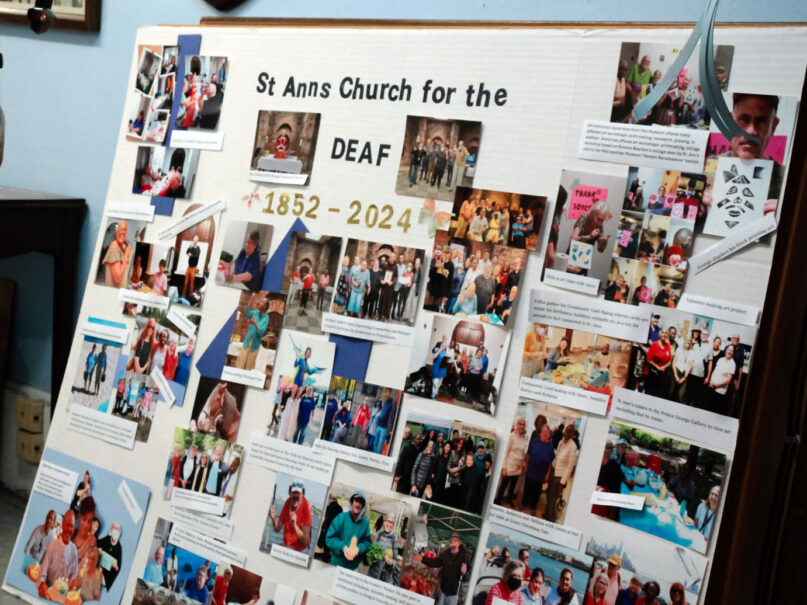
A poster of congregants at St. Ann’s Church for the Deaf, Sunday, Aug. 17, 2025, in New York City. (Photo by Leyrian Colón Santiago)
For a hearing person, the noise of the musicians playing and the footsteps of St. George’s congregants in the church upstairs as well as honks from cars outside filter into the silence of the basement room, but the congregation remains rapt on the gestures and the firm signs of the service. Hand movements and facial expressions are essential, not just for understanding words, but for feeling, sensing and fully grasping what is being communicated.
According to Jannelle Legg, an assistant professor in history at Gallaudet University who wrote her doctoral thesis on the church’s founding and early life, St. Ann’s once served as a hub for the Deaf community in New York, providing not only worship but networking for job seekers, mutual aid and housing support.
But after World War II, the church was affected by the city’s demographic and structural changes to such a degree that its West 18th Street chapel, built to afford deaf people clear sight lines during the service, had to be sold.
After the war, the nation as a whole also moved away from religious affiliation and toward other forms of public engagement and participation, and communication services for deaf people also evolved, meaning that many of them no longer depended on the church as a central point of coordination and support for housing, employment or mutual aid. Both trends have contributed to the decline in attendance at St. Ann’s today.
“St. Ann’s was an important space, offering salvation and mutual aid to adherents. Church leaders intervened on issues of employment, economic scarcity or encounters with the law. Today, many of the services and support that parishioners received are available outside of the church,” said Legg about how the church has had to constantly redefine itself. At the same time, technological advancements have provided more communication tools for the Deaf community.
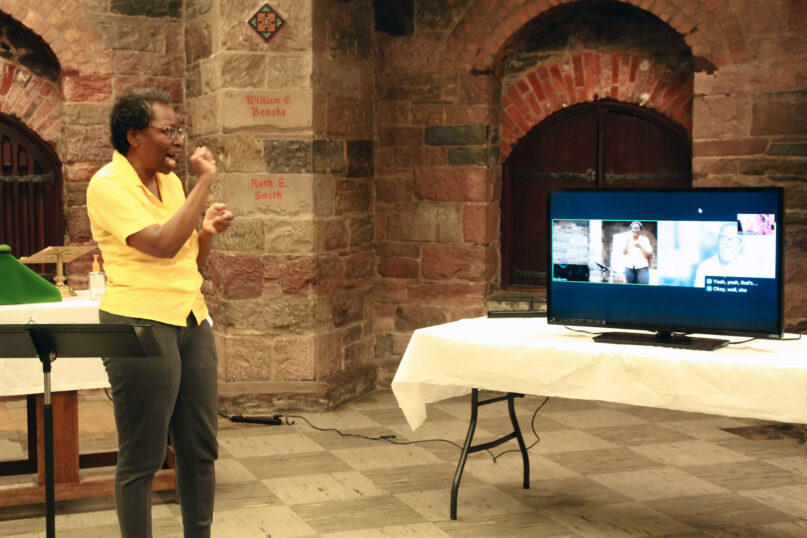
Melissa Inniss interacts with virtual attendees at St. Ann’s Church for the Deaf, Sunday, Aug. 17, 2025, in New York City. (Photo by Leyrian Colón Santiago)
But barriers still exist, said Legg, and St. Ann’s still plays an important role for its parishioners today.
Melissa Inniss, a volunteer congregant and hearing individual who leads the services, believes St. Ann’s fortunes could change again and that it could continue being a safe space for the city’s Deaf community. Since 2012, Inniss, an audiologist, has been helping lead Sunday services, which includes preparing the liturgy, organizing events for the congregation, making follow-up calls and initiating programs to help the church grow. “This is my way of staying connected to the work I used to do as an audiologist,” said Inniss.
But in June, the Rev. William Erich Krengel became just the seventh deaf pastor in St. Ann’s history, its first full-time clergy person since 2007, giving the congregation hope that it can grow again.
Erich Krengel, who was ordained in 2001, has served part time since 2012, visiting the church twice a month to lead services and support congregants while working as a social worker and serving in the Episcopal Diocese of Connecticut, where he lives. But his part-time status prevented him from making home visits or involving himself deeply in pastoral care.
Erich Krengel, who is deaf, grew up in a hearing family where his parents refused to let him learn sign language, so he relied entirely on lip-reading and did not develop sign language skills until later in life. His inability to communicate effectively impacted his development at home and everywhere he went. “At the church I attended as a child, I couldn’t understand anything the pastor was saying. There were no interpreters or anything to help explain what was going on in the church,” said Erich Krengel, who said the experience led him to become a priest.
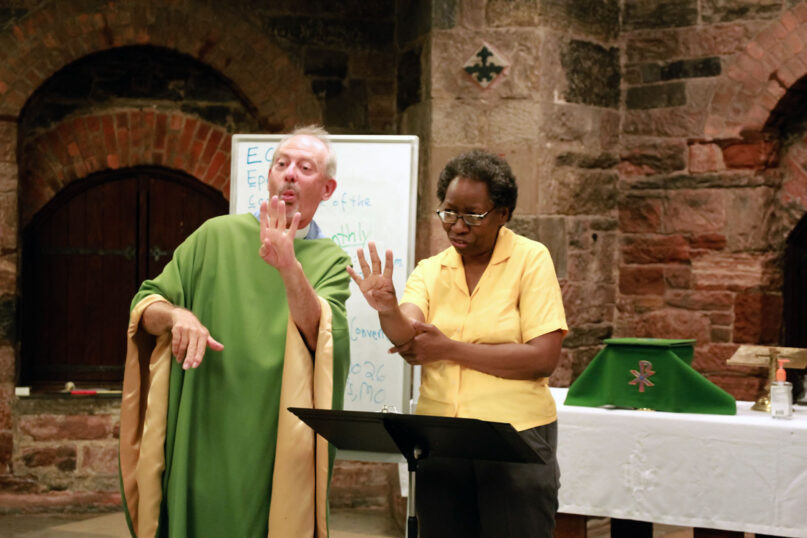
The Rev. William Erich Krengel, left, and Melissa Inniss sign with attendees at St. Ann’s Church for the Deaf, Sunday, Aug. 17, 2025, in New York City. (Photo by Leyrian Colón Santiago)
In the 19th century, according to Legg, St. Ann’s demonstrated the need to transform the worship space with innovations such as American Sign Language. Today, the historian said, a lasting revival “would involve a reclamation and extension of those transformations,” said Legg, that would respond to the contemporary needs of deaf people in New York and beyond.
Erich Krengel said his first focus will be on restoring community. “I want to start slowly and take my time with the people. I want to find more people and build stronger connections,” said Erich Krengel in a video interview with a sign language interpreter.
Erich Krengel’s goals might seem modest, but for Claudine Bastien, a 43-year-old who comes to St. Ann’s, the priest’s appointment has served as motivation to continue attending.
“I want to stay at this church because it helps me to have a priest who is also from our community and knows sign language,” said Bastien.
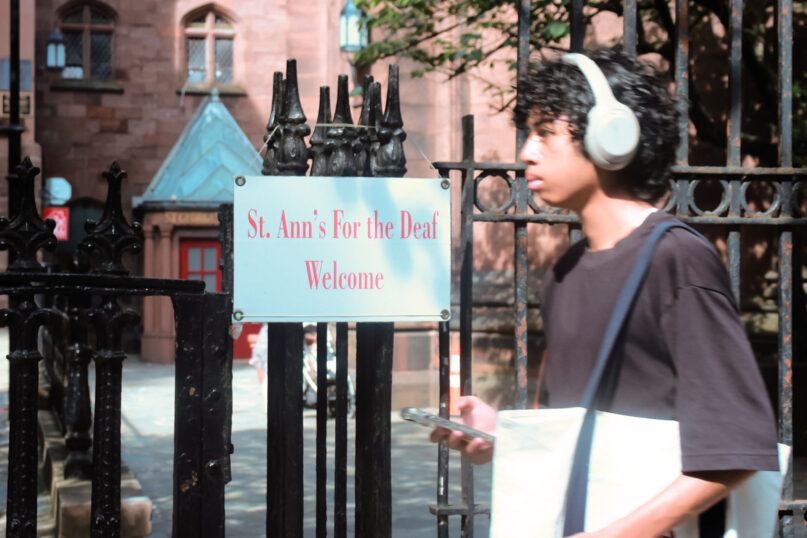
A pedestrian passes a sign for St. Ann’s Church for the Deaf, which meets in the basement of St. George’s Episcopal Church in midtown Manhattan. (Photo by Leyrian Colón Santiago)


